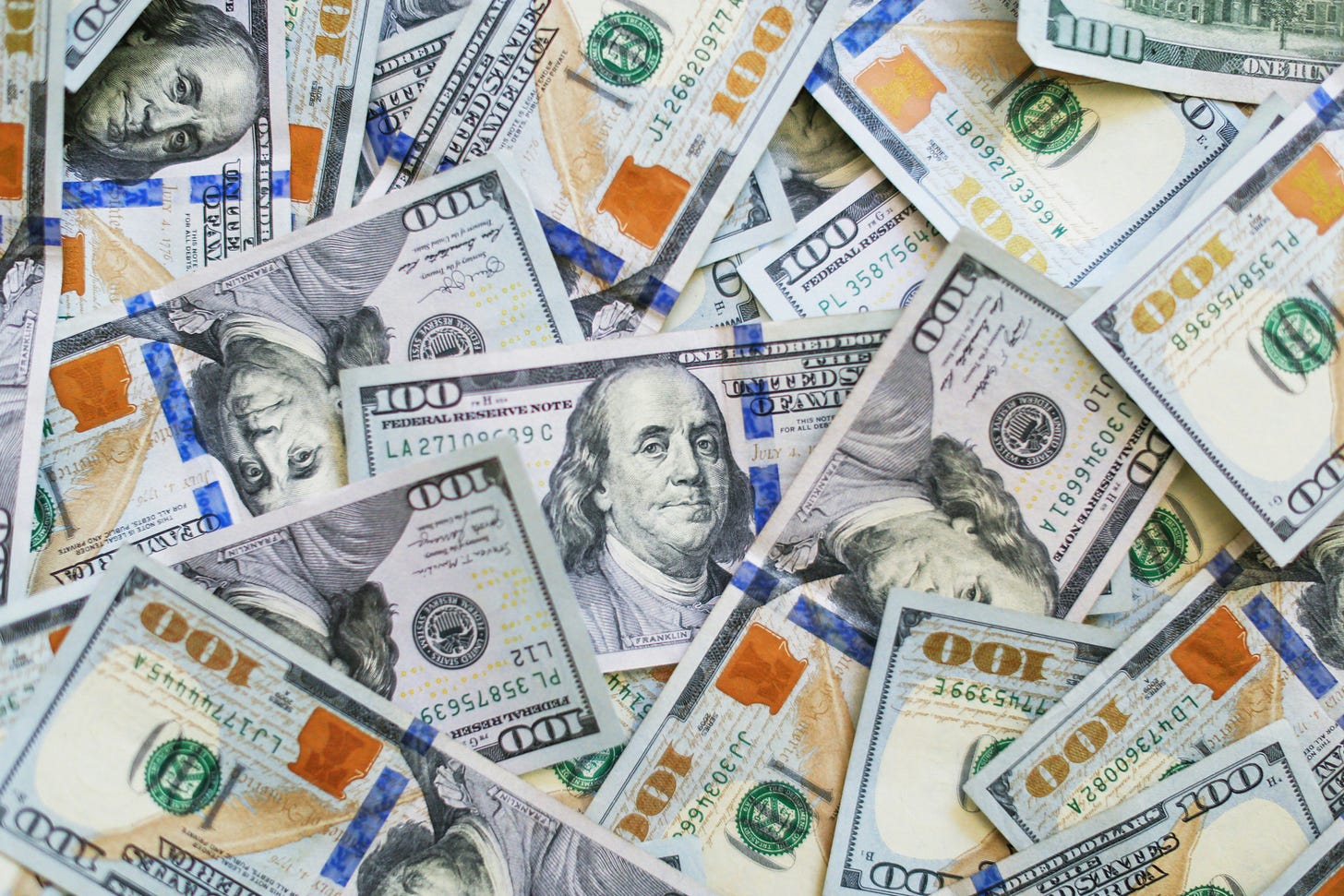The $12 Billion Tidal Wave Reshaping American Democracy
A closer look at out-of-control campaign spending.

I’ve previously addressed the rising costs of American political campaigns. But a reader asked me to elaborate on where that money comes from and, once accumulated, what the campaign decision-makers do with it.
To start, here’s a chart I shared in my September 9th article comparing aggregated federal campaign disbursements — across all parties — from 2012 and 2024. Think of this as overall campaign spending:
That’s a $12 billion increase in federal campaign spending over the last twelve years. Just federal. I don’t know how much is being spent at the state and local levels — but it’s a safe bet those numbers are rising, too.
What jumps out to me – beyond the $12 billion dollar increase – is that more than $9 billion of it came from an increase in PAC disbursements.
So let’s talk about PACs.
PACs – Political Action Committees – are independent organizations that can raise and spend money to influence elections. Unlike principal campaign committees, which are official fundraising and spending organizations for individual candidates – PACs (at least outwardly) are not tied to a single politician or issue. PACs still pool money from donors, but they can spend that money to support or oppose multiple candidates, ballot initiatives, or political causes.
PACs have been around for decades, and, like donations to candidates or campaign committees, there are hard caps on how much an individual can donate to a PAC. These limits democratized our electoral process, ensuring that no one individual, no matter how wealthy, could single-handedly buy an election. For example, I can contribute up to $5,000 to a PAC in one election cycle. That same limit applies to a billionaire as well. Everyone was on, roughly, equal footing.
Until Super PACs entered the picture.
Super PACs – or “independent expenditure-only political actions committees” – are the result of the 2010 Supreme Court decision Citizens United v. FEC. Super PACs cannot directly coordinate with political campaigns, but that doesn’t stop them from funneling massive amounts of money into key areas – ads, messaging, and influence. Unlike traditional PACs, Super PACs can raise an unlimited amount of money from individuals or organizations.
With contribution limits gone, elections stop being contests of ideas and start becoming auctions. The wealthy don’t just influence the outcomes – they shape the playing field.
Just look at the surge in megadonor contributions (those who gave $5 million or more) over the last two election cycles: In 2020, Super PACs backing major presidential candidates took in $406 million from megadonors. In 2024, that number soared to $865 million – nearly a quarter of the $3.4 billion raised by the two major presidential party nominees.
That $12 billion doesn’t just sit in vaults. It gets spent. It powers campaigns. It buys web hosting, computers, and email addresses. It hires staff and political consultants. It buys advertising. It buys contact and ideological information on donors and voters.
Thousands of people make a living off our campaign contributions.
And that’s just what we can see.
Who knows what else it buys? What transpires behind the curtain.
We don’t always get to see how Super PAC money shapes decisions, how it lands in unexpected repositories. Sometimes it pays off in cabinet positions. Or policies. Or government contracts. But, often, it pays off in ways we never witness.
I keep typing out the words “ $12 billion dollars” and acting like it’s a large, but perfectly comprehensible, amount of money.
It’s not. Not to me, anyway.
Even the numerical form — $12,000,000,000 — doesn’t do justice to its magnitude.
There’s a 1967 educational Disney short called Scrooge McDuck and Money that illustrates what a billion dollars looks like.
Disclaimer: Scrooge McDuck and Money (1967) is a copyrighted work owned by the Walt Disney Company. This video, featuring characters Scrooge McDuck, Huey, Dewey, and Louie, is used for educational and commentary purposes only under the fair use doctrine. All rights to the video, characters, and associated trademarks are the property of their respective owners. No copyright infringement is intended.
One billion stacked in $1 bills? It’s 800 times the height of the Washington Monument. Laid out side by side? It would circle the Earth four times.
Now multiply that by twelve.
That’s like contemplating a tsunami. Or an atomic blast.
It’s overwhelming.
But the tallest tsunami ever recorded was 1,720 feet. About a third of a mile.
The mushroom cloud of Tsar Bomba, the largest nuclear bomb ever detonated, was about 195,000 feet tall. About 37 miles.
But $12 billion in $1 bills? That would circle the Earth 48 times — roughly 6,300,000,000 feet. Almost 1.2 million miles.
I’m not built to understand this amount of money.
What it means. What it can buy.
To be honest, the number itself scares me.
It’s massive. Eldritch.
It feels like a predator. And we’re all swimming in its shadow.



Thank you for the astounding and yet still incomprehensible size of what a bilion actually is!